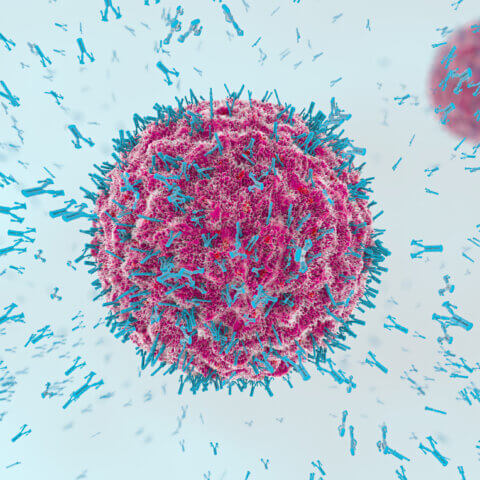Determining the right regulatory pathway for a drug product is a critical early decision that can shape the entire development strategy. While many products may appear to fit the generic model, nuances in formulation, dosage form, route of administration, or intended use can disqualify them from a traditional Abbreviated New Drug Application (ANDA). In such cases, sponsors must evaluate whether the 505(b)(2) New Drug Application (NDA) pathway is more appropriate—or whether an ANDA Suitability Petition can bridge the gap. Understanding the distinctions and strategic implications of these regulatory routes is essential for aligning product development with business goals and timelines, and minimizing approval risk.
In this blog post, we discuss a path to US drug approval for certain generics, and compare petitioned ANDAs with 505(b)(2) NDAs. Additional information on this topic can be found in the FDA draft guidance to industry: Determining Whether to Submit an ANDA or a 505(b)(2) Application, October 2017.
Pathways in focus: ANDA versus 505(b)(2)
A generic drug product is one that is comparable to an already approved reference listed drug (RLD) in dosage form, strength, route of administration, quality, performance characteristics, and intended use. Generic drug applications, or ANDAs, are termed “abbreviated” because they are generally not required to include nonclinical and clinical data to establish safety and effectiveness in the targeted patient population. Instead, generic applicants must demonstrate that their product is bioequivalent (BE) to the RLD through exposure analyses, usually conducted in healthy individuals. A determination of BE renders the generic and reference products interchangeable (in other terms, a drug product approved in an ANDA is classified as therapeutically equivalent to its RLD, indicated by a therapeutic equivalence code beginning with an ‘A’ in the Orange Book).
The 505(b)(2) drug approval pathway, which also has great potential to streamline drug development, is not appropriate for generic products. The 505(b)(2) NDA contains full reports of investigations of safety and effectiveness but where at least some of the information comes from studies not conducted by or for the applicant, and for which the applicant does not have right of reference. This pathway allows for greater differentiation regarding the characteristics of the proposed product when compared with the reference approved product (i.e., listed drug or LD). Normally, changes in formulation, dosage form, dosage strength, route of administration, dosing regimen, and indication, among others, would warrant a 505(b)(2) application, as opposed to an ANDA. A drug approved via a 505(b)(2) application may or may not be rated therapeutically equivalent to the LD it references.
It is important to note that for some products, a very thin line separates ANDAs from 505(b)(2) NDAs. For example, for a change in an active ingredient such as a different salt, ester, or enantiomer, despite containing the same active moiety, the product must be approved via the 505(b)(2) pathway as such change may alter how the drug performs when administered to patients. In contrast, non-substantial changes in formulation that do not affect the safety and effectiveness of a product compared to the approved reference product (e.g., change in some inactive ingredients), are usually appropriate for ANDAs.
What about products that fall on the thin line between 505(b)(2) NDAs and ANDAs? Consider a product that differs from the RLD in its route of administration, dosage form, or strength. If the change is not expected to impact BE and no additional data (e.g., efficacy studies) are required to demonstrate safety and effectiveness, the product may still be eligible for an ANDA. In such cases, the applicant can submit a suitability petition to the FDA to seek approval to pursue the ANDA pathway.
Suitability petitions: How do they work?
According to 21 CFR 314.93, an applicant may submit a suitability petition to FDA’s Dockets Management Staff requesting permission to submit an ANDA for a generic drug product that differs from an RLD in its route of administration, dosage form, strength, or if it has one different active ingredient in a fixed-combination drug product. Once submitted, FDA will assign a 6-month goal date to review and respond to the petition, starting on the date of the Agency’s completeness assessment of the request. FDA will approve a suitability petition unless, among other reasons, one of the following occurs:
- FDA determines that the safety and effectiveness of the proposed change from the RLD cannot be adequately evaluated without data beyond the scope of an ANDA.
- A drug product is already approved in an NDA for the change requested in the suitability petition.
- FDA has determined that the RLD has been withdrawn from sale for safety or effectiveness reasons, or the RLD has been voluntarily withdrawn from sale and the FDA has not determined whether it was for safety or effectiveness reasons.
- The suitability petition requests a change to a drug product that triggers the need for pediatric studies under the Pediatric Research Equity Act, which would not be waived by FDA.
Importantly, FDA will prioritize review of certain suitability petitions for drug products that could mitigate, resolve, or prevent drug shortages; address a public health emergency; or are for a new strength of a parenteral product that could aid in eliminating pharmaceutical waste or mitigating the number of vials needed per dose, among others.
Examples of products approved through petitioned ANDAs
A suitability petition is a public process, and both applications and Agency response letters are available on the Regulations.gov website. Below are some examples of suitability petitions that have been approved or denied by the Agency, and the basis for the FDA’s decision in each case.
| Proposed Product | Type of Change | Reference Listed Drug | Decision | FDA Basis for Decision |
| Baclofen Tablets, 15 mg | Change in strength | Lioresal® Tablets, 10 mg and 20 mg | Approved | The proposed change in strength or dosage form does not pose questions of safety or effectiveness. The uses, dose, and route of administration were the same as that of the listed drug product. |
| Cefazolin Sodium for Injection, EQ 2 grams base/vial | Change in strength | Ancef® (Cefazolin Sodium) for Injection, EQ 1 gram base/vial | Approved | |
| Citalopram Hydrobromide Capsules, 10 mg, 20 mg and 40 mg | Change in dosage form | Celexa® (Citalopram Hydrobromide) Tablets, 10 mg, 20 mg and 40 mg | Approved | |
| Methotrexate Sodium Oral Solution; 5 mg/mL | Change in dosage form | Methotrexate Sodium Tablets, 2.5 mg | Approved | |
| Griseofulvin Ultramicrosize Oral Suspension, 250 mg/ 5 mL | Change in dosage form | Gris-Peg® (griseofulvin ultramicrosize) Tablets, 250 mg | Approved | |
| Escitalopram Oxalate Orally Disintegrating Tablets, 5 mg, 10 mg, 15 mg and 20 mg | Change in strength and dosage form | Lexapro® (Escitalopram Oxalate) Tablets, 5 mg, 10 mg, and 20 mg | Approved | |
| Cefprozil Tablets for Oral Suspension, 125 mg and 250 mg | Change in dosage form | Cefzil® (Cefprozil) Powder for Oral Suspension, 125 mg/ 15 mL and 250 mg/ 5 mL | Denied | The proposed change in dosage form raises questions of safety and effectiveness, and FDA has concluded that clinical trials are required for this specific drug product (“the product delivers a fixed dosage and therefore, there is no assurance that accurate doses could be delivered for children of different weights using the tablets for oral suspension”). |
| Fluocinolone Acetonide, 0.01%; Hydroquinone, 4%; and Tretinoin, 0.05% Topical Solution | Change in dosage form | Tri-Luma® (Fluocinolone Acetonide, 0.01%; Hydroquinone, 4%; and Tretinoin, 0.05%) Cream | Denied | The proposed change in dosage form raises questions of safety and effectiveness, and FDA has concluded that clinical trials are required for this specific drug product (“for topical preparations for the skin, well-controlled clinical trials that establish the safety and effectiveness of the drug product, for purposes of measuring BA, or appropriately designed comparative clinical trials, for purposes of demonstrating BE are recommended”). |
| Losartan Potassium Oral Solution, 10 mg/mL | Change in dosage form and strength | Cozaar® (Losartan Potassium) Oral Tablets, 100 mg | Denied | The proposed changes in dosage form and strength raise questions of safety and effectiveness, and FDA has concluded that clinical trials are required for this specific drug product (“it has been determined, under PREA, that clinical studies are required to demonstrate the safety and or effectiveness of losartan potassium in children under the age of six”). |
| Phenylephrine Hydrochloride Ophthalmic Solution, 2.5% and 10% Preservative Free (0.7 mL fill volume) | Change in fill volume from LD and change in formulation to preservative free | Phenylephrine Hydrochloride Ophthalmic Solution, 2.5% (2 mL or 15 mL fill volume) and 10% (5 mL fill volume) | Denied | The requested changes are not the types of changes for which the Agency will accept a petition. |
| Lidocaine Hydrochloride Non-Aerosol Spray, 12 mg | Change in dosage form and active ingredient | Xylocaine (Lidocaine) Oral Spray, 10% | Denied | The requested change in active ingredient from lidocaine to lidocaine hydrochloride is not a change for which the Agency will accept a petition. |
| BE = bioequivalence; EQ = equivalent; FDA = Food and Drug Administration; LD = listed drug; PREA = Pediatric Equity Research Act | Source: Regulations.gov | ||||
Making the best decision for your product
When determining the optimal path for product development, sponsors should evaluate all available regulatory options, understanding the respective advantages and disadvantages of each. The choice between an ANDA and an NDA can influence development timelines, costs, and opportunities for product differentiation. The ANDA pathway is typically more straightforward, as it is intended for generics that are interchangeable with an RLD. In contrast, the 505(b)(2) NDA route offers a valuable option for sponsors seeking market distinction, potentially longer exclusivity, or possibly therapeutic inequivalence, while benefiting from a more streamlined development program.
Premier’s experienced regulatory and multidisciplinary teams support sponsors in navigating these pathways to align development strategies with their specific objectives. Contact us for support.




